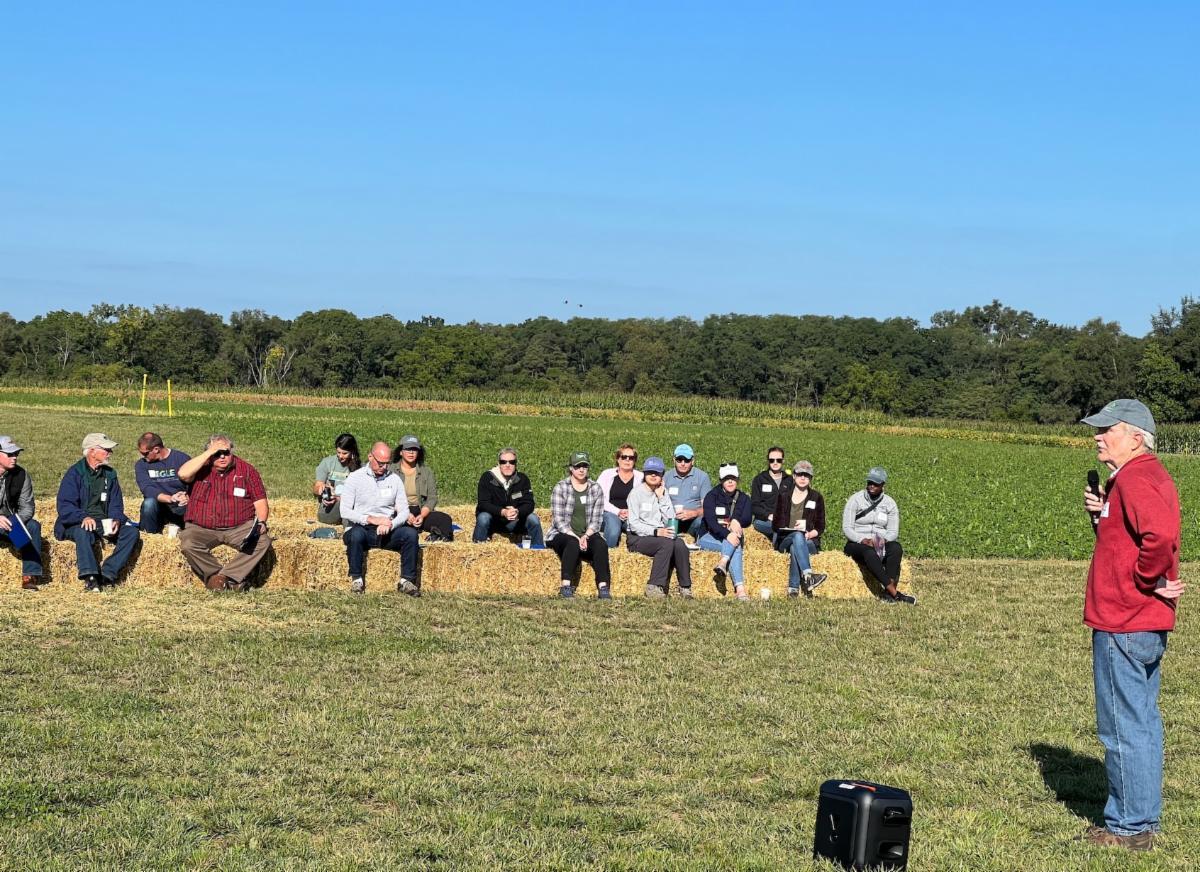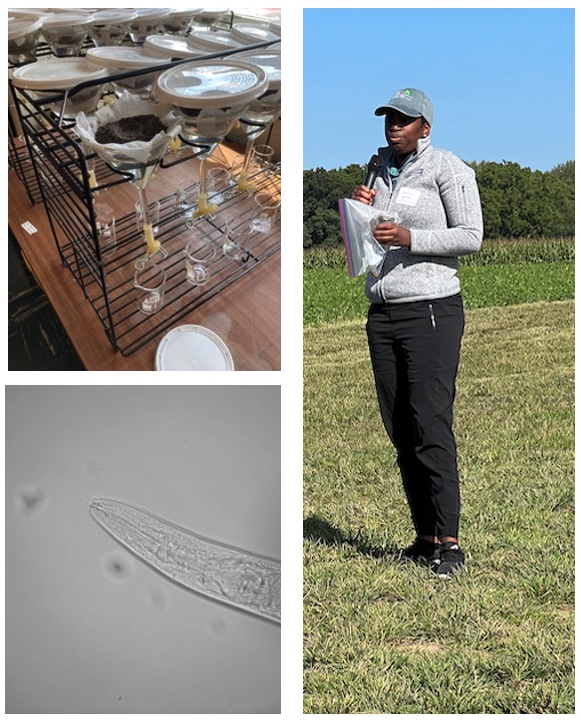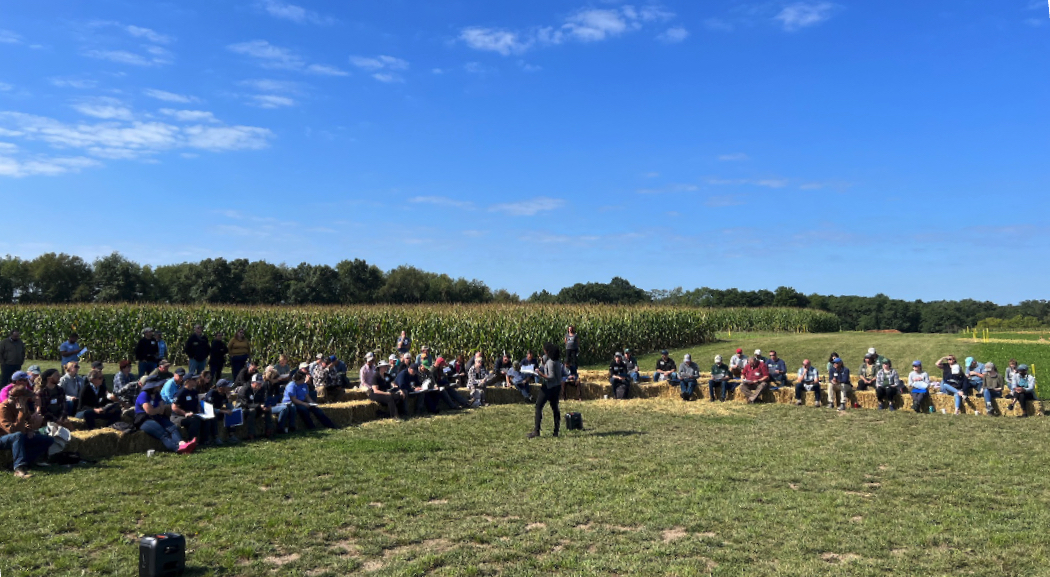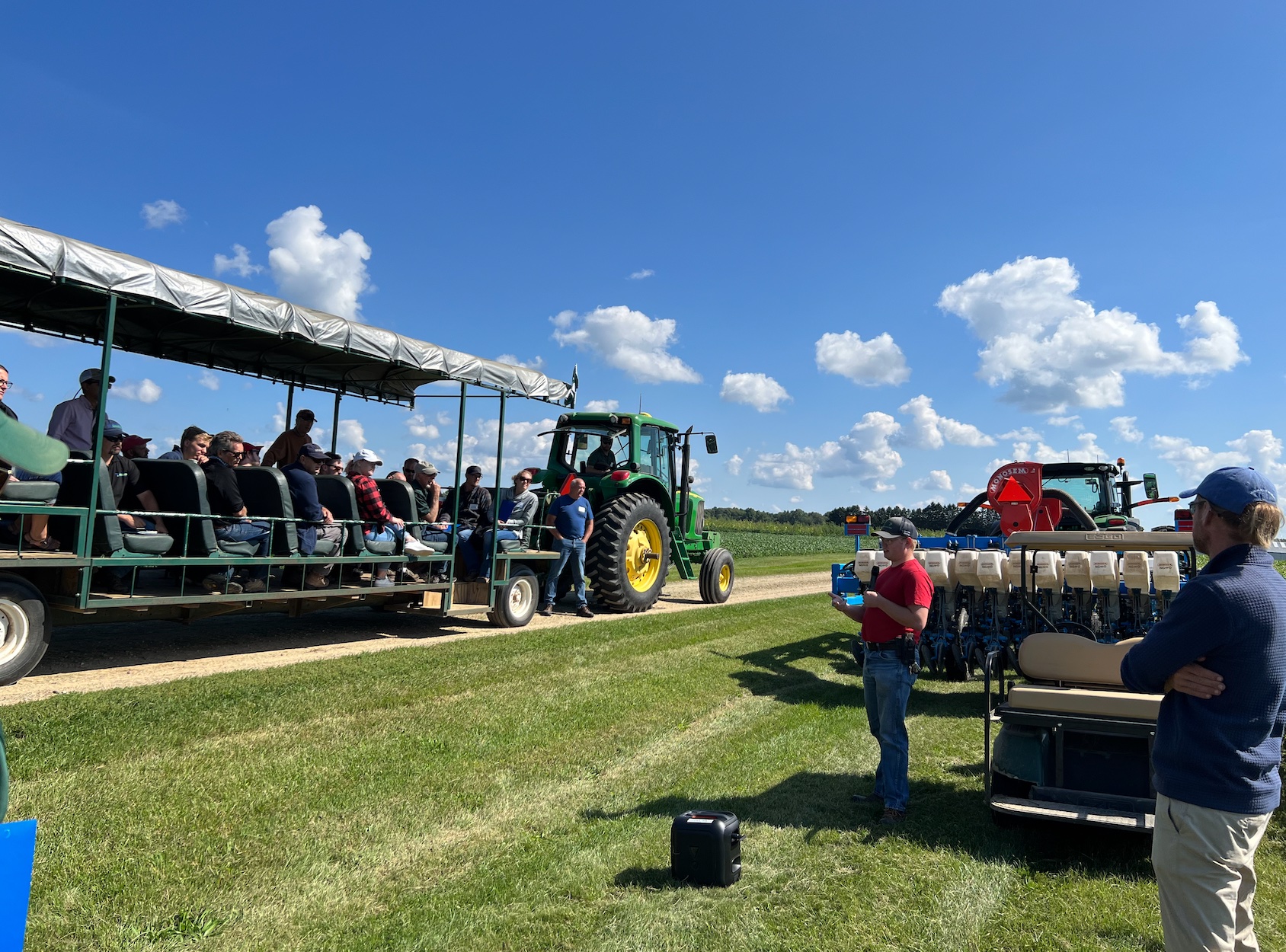LTAR has a field day!
Sustainable Cropping Systems for the Future is the theme at the Long-Term Agroecosystems Research LTAR field day, which took place recently on the grounds of the field station.

Recently several PSM scientists, students and MSU Extension educators met with stakeholders and other visitors out in the fields to learn more about “Sustainable Cropping Systems for the Future” in the first ever field day held at the LTAR fields adjacent to the KBS research station.
An open invitation to new research:
“At KBS LTAR we prioritize projects that are community-led and driven by stakeholder questions.”
If you’re interested in: working on-farm please contact Brook Wilke (wilkebro@msu.edu); getting involved in outreach and engagement opportunities, please contact Tayler Ulbrich (chicoin1@msu.edu)
Supported by the USDA and MSU, KBS Long-Term Agroecosystem Research (LTAR) scientists and community partners are working together to investigate the relationships among row crop systems, environmental sustainability, and profits.

Among many MSU researchers working at the LTAR are Phil Robertson (above), Christine Sprunger, Bruno Basso, Maninderi Singh, Alexandra Kravchenko and --all have students and colleagues using long-term data and collaborating with numerous scientists and stakeholders toward a future in sustainable agriculture.
ON a beautiful bluebird day in late September, attendees were introduced to LTAR scientists and the challenges to Michigan agriculture including adapting to climate change, maintaining ecosystem services, and integrating livestock in crop systems. Now in its second year of the first five-year USDA funding cycle, most LTAR research at KBS is focused on two models and treatment methods: the “business as usual” treatment following traditional corn/wheat/soy rotations based on mid-Michigan practices, and the “aspirational” – or “What could farming look like in 30 years” in which various combinations of cover crops, seed timing and method, pest control, tilling regimes, and inputs.

Soil quality is a big part of Dr Christine Sprunger’s LTAR research. Beyond increasing carbon, Sprunger’s team is looking closely at more subtle soil health indicators. After only 2 years into the KBS TAR project, they have yet to see real differences in soil carbon. So, Sprunger said “We are looking at Nematodes and how they function in the soil – based on what they eat – which tells us a lot about what’s going on.”
Sprunger and her students find that soil biology varies significantly under the two different cropping strategies. "We are already seeing greater numbers of nematodes abundance and biodiversity in the ‘aspirational’ corn/soy crop rotation systems,” Sprunger said, "And, it turns out, the vast majority of nematodes are beneficial. And they are contributing to a lot of ecosystem services.”
Sprunger also introduced the group to the MiStrips prairie strips program.
The ultimate goal is sustainability
Christine Charles, MSUE Regenerative Cropping Systems Extension Educator, says the team meets with “a bumper crop” of interested stakeholders, and asks them: “what indicators are you most interested in exploring?”

"While profitability and economics are top of the list, " Charles said, "we would like to reach those goals sustainably. “ Charles referred to LTAR data in a handout that compares profits between “aspirational” methods and “business as usual” soybean farming for the year 2022. The data shows that while yields in the “aspirational” plots are lower, the production costs in “business as usual” plots decrease the net profit per acre overall. "We must take everything into account," Charles said.

Graduate student Patrick Copeland, (Dr Maninder Singh’s lab) discusses seeding strategies—testing random broadcast seeding against precise row spacing in soy—while Brooke Wilke (LTAR Associate Director for Science and Agronomy) looks on.



 Print
Print Email
Email




